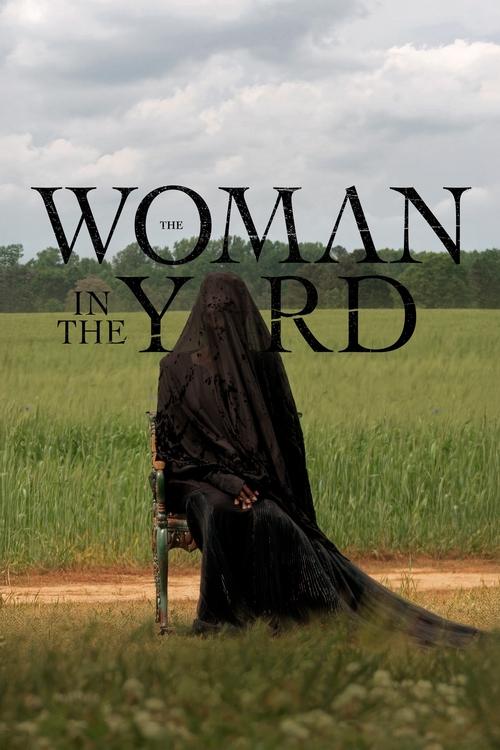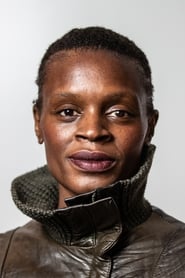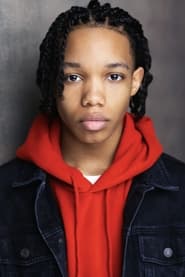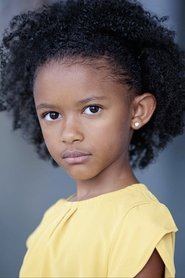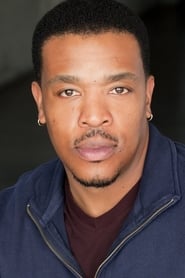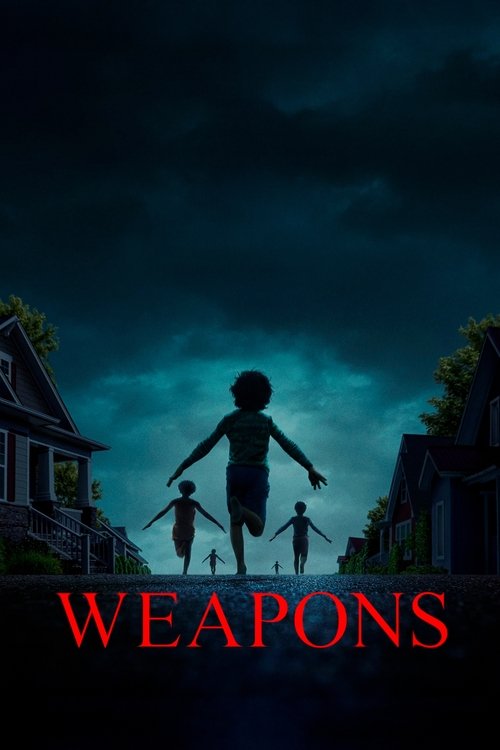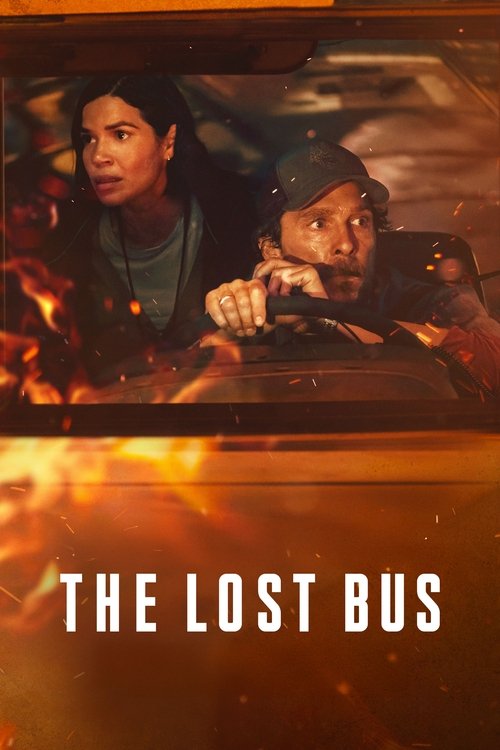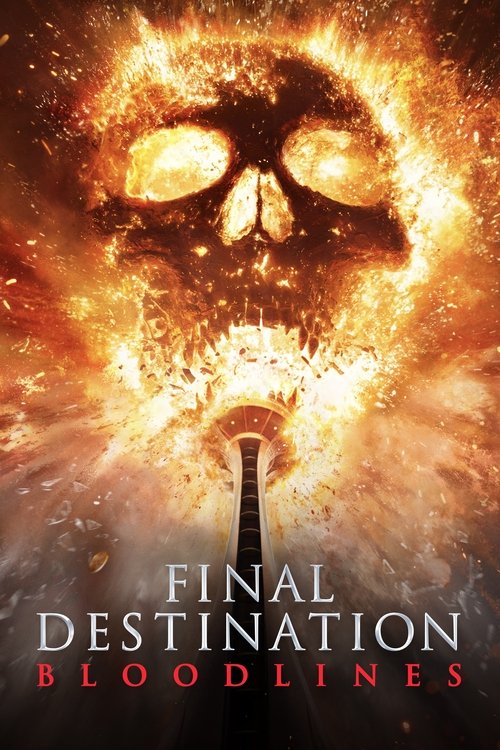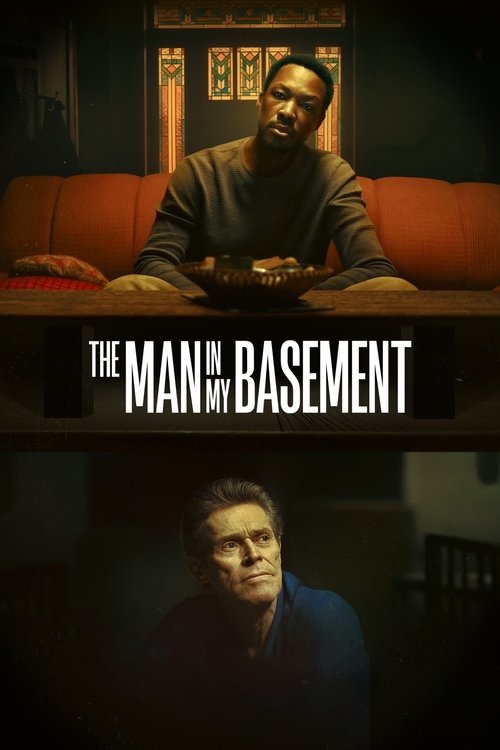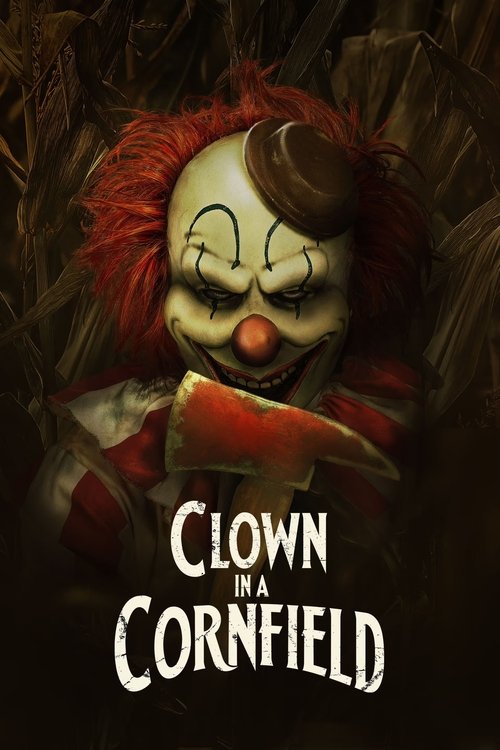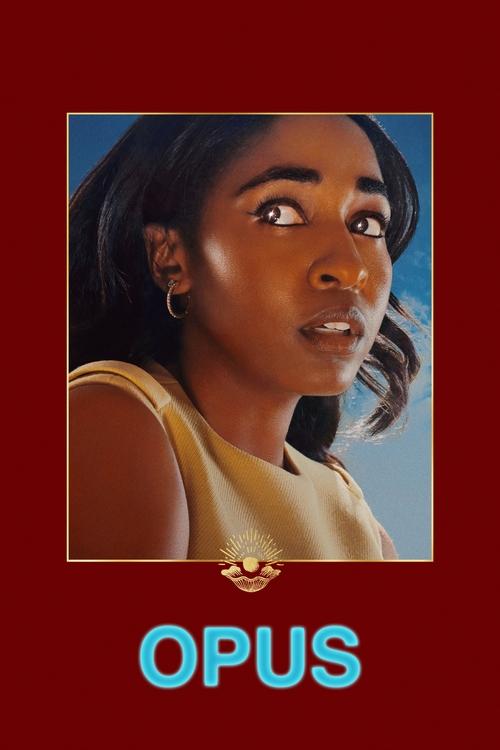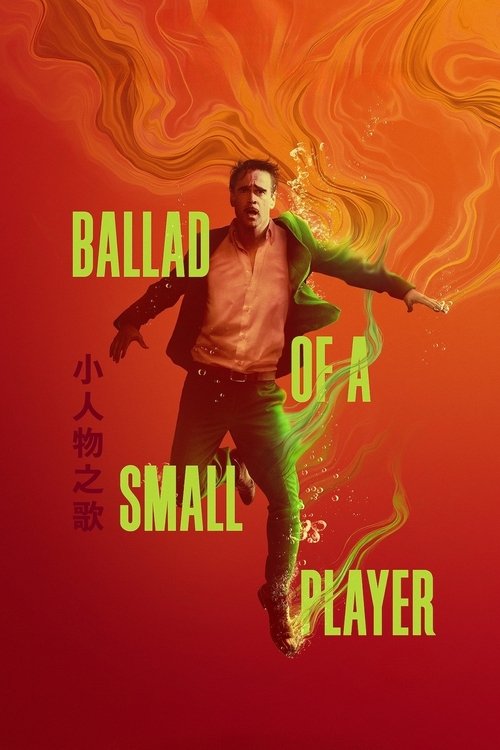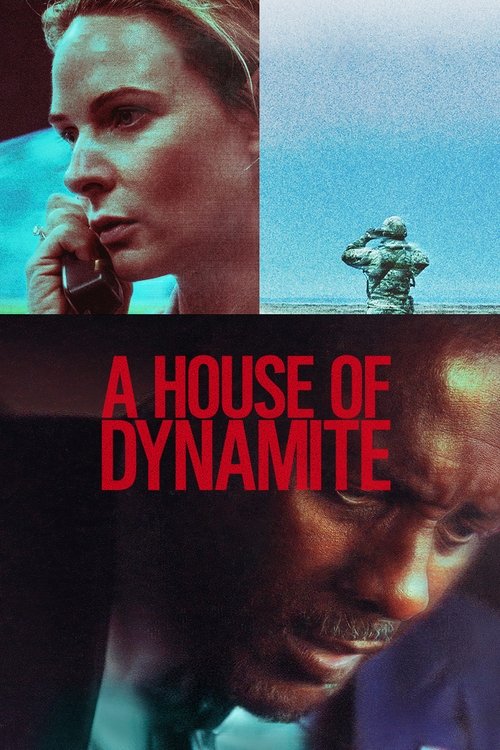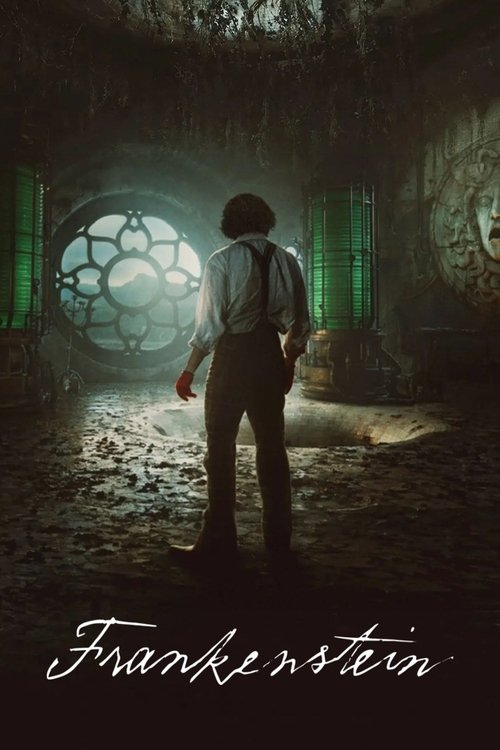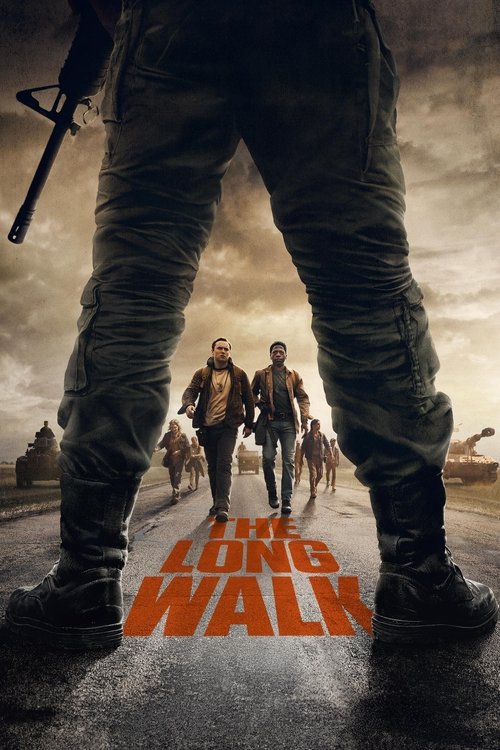
Ask Your Own Question
What is the plot?
Ramona sits alone in her living room and watches an old home video of her husband David speaking to the camera, explaining that he wants to give their house a name. The recording freezes on David's smile; the wrecked car that killed him still rests on the gravel by the driveway as a permanent, rusting reminder. Ramona moves slowly through the rooms of the isolated farmhouse she now occupies, carrying the daily work of caring for their two children, Taylor and Annie, on legs that no longer always obey her. The family's electricity has been cut, the house is dark and cold, and the children drift through their hours with bored, restless energy. Ramona keeps a hard edge with them: she enforces rules, corrects with bluntness, and tries to shelter them from what she will not say.
One morning a woman in black appears on the stretch of lawn in front of the house. Ramona steps outside to ask who she is and what she wants. The stranger sits with a slight tilt of her head and asks, plainly, "How did I get here?" Her voice slides from bewilderment into menace. She names Ramona aloud, recounts details of the accident that disabled her, and when she lifts her palms they are smeared with dark, wet-looking stains. Then she says, without hesitation, "Today's the day." Ramona orders Taylor and Annie to stay inside and not to go near the woman. She watches from the doorway as the stranger does not rise or move away; instead the woman folds her hands, remaining exactly on the grass like a figure waiting for a train.
Taylor does not accept his mother's command. He pulls a kitchen chair up to the front window and sits there for a long time, watching the woman through the glass. Ramona tells him she will handle it, but frustration and distrust gnaw at him. During a kitchen argument she slaps a mug down onto the linoleum; it shatters and Terrible curiosity becomes defiance. Later Taylor fetches the rifle from its hiding place and steps into the yard. He stands at the lawn and points the barrel toward the place where the stranger sits. The woman rises slowly and walks closer to the house. She does not flinch when the gun is raised; instead she addresses Taylor directly, telling him that his mother has not told him the whole truth about the night David died.
In flashes the past intrudes. Ramona and David sit at a small table in a restaurant, the plates cooling, words rising and falling between them. Ramona confesses her exhaustion and unhappiness; she speaks about feeling trapped by responsibilities, about the heaviness of every day. The argument escalates when they leave and climb into the car. Ramona drives home with David beside her; she takes her eyes off the road to rehearse what she will say, or because the burden inside her makes concentration difficult. The steering wheel slips beneath her hands, and the car careens. Something gives--metal, glass, a final, sickening rotation--and when the emergency crews clear the wreckage only one body remains intact. David is dead. Later, in the kitchen under cold lighting, Ramona tells the children that David was at the wheel and that his mistake ended him. She keeps the truth to herself because she cannot bear assigning the blame to herself, because she fears the fracture that truth will open inside her family.
Back in the present, the woman in the yard repeats that the story Ramona told is false. The stranger's tone grows more intimate, as if she knows where Ramona keeps the worst parts of herself. She steps up to the edge of the porch and then further, and the air around the house changes: shadows lengthen and concentrate into moving shapes. The family dog, Charlie, stalls in the doorway, ears flat. The woman's shadow uncoils and strikes outward. Objects slam unaided across rooms; a chair spins and a lamp arcs off a table. Ramona hears a metallic snap and, when she runs to the dog's kennel, finds the chain that once fastened Charlie broken and the leather collar absent. Charlie is gone. For a long stretch there is only wind and the faraway cry of something that might be a dog.
Ramona gathers Taylor and Annie and leads them upstairs to the attic, pulling the hatch closed behind them. Boards creak as they climb into the confined room where trunks and old blankets wait. From the slatted window they watch a silhouette move about the yard, and then a wave of darkness washes over the house. The woman's presence penetrates the roofline; she seems to drain light and color. A shape with a face scarred and puckered appears at the attic door and then within the doorway. The children squeeze against Ramona's legs. Taylor hides behind crates, keeping the rifle's butt pressed into his palms. The woman speaks softly to Annie when she sees the little girl; she says she will not hurt her, that she only wants to take her home. Her voice is coaxing and practiced. Annie shudders and squeezes Ramona's hand until her nails bite into skin.
Ramona watches the woman's face more closely and recognizes a mirrored map of her own pain. She wants to lunge forward, to grab Annie and run through the attic's narrow hatch, but the stranger's shadow bends across the ceiling and pulls at the rafters like a slow tide. Downstairs the frame of the house creaks and a cold gust of wind scatters a pile of photographs from a mantel. Far below, furniture answers the stranger's will and slams against walls. Ramona realizes the stranger moves not only her body but the negative space of the house itself.
The narrative shifts outward and backward at once: the woman's questions return--"How did I get here?"--and for a moment Ramona experiences herself inside the woman's posture, as if the exchange of roles has become fluid. She remembers the day she first woke and found herself in the yard, asking the same bewildered question. She remembers praying night after night with a voice that pleaded for strength. The prayer sounds different now; she had asked to be strong enough to go on with care for the children, but sometimes the prayer had edged toward asking for the strength to stop-- to end her own life and spare them the mess of a mother who could not manage.
Ramona brings the children down from the attic and makes a decision: to protect them she must send them away. She writes a note, puts a few garments into a duffel bag and instructs Taylor to take Annie to a neighbor's house beyond the lane. Taylor resists at first, staring at his mother with equal parts distrust and duty, but he obeys, gathering Annie and running barefoot across the gravel. They vanish down the narrow lane between fields, small figures swallowed by frost-hung hedges. Ramona closes the front door and moves toward the place in the pantry where the rifle rests.
The woman stands beside her in the kitchen and guides the scene like a darkmidwife. She takes Ramona's hand and helps her put the rifle to her chin. The stranger's palms are wet and red. She speaks in a soft, urgent cadence, telling Ramona that the children would be better off without the chaos of her presence, that death will give them a life that does not include a broken, burdened mother. She shows Ramona how easy the weight of the gun can be, how quickly the room can become quiet. The stranger repeats what Ramona has already whispered to herself in the long dry nights since the accident: that she ought to stop being the cause of failure, that she should not inflict her pain on Taylor and Annie.
As Ramona stands with the barrel under her jaw, the film's chronology tightens into the single point of decision. She feels the cool metal and the rhythm of her own breath. For a moment she hears only the voice of the stranger guiding her hand, matching the memory of her own prayers. At the edge of that precipice a different memory rises: David's laugh, the warmth of his fingers on the back of her hand as they named the house; a video of him saying, softly, "I want to name this place," a small, ordinary tenderness that seems outrageously precious now. Ramona thinks of the morning she told Taylor and Annie that their father's hands had been on the wheel, a lie she told to keep herself intact. She feels the brittle truth of that lie crack under the pressure of her children's faces.
In that instant Ramona pulls the rifle away from her chest. She lowers the gun and turns to face the woman. The woman's features harden, and her wet hands tremble. She tells Ramona, with a strange mixture of pity and finality, that she appeared because Ramona had been calling on something--calling for strength. But the woman clarifies that the prayer Ramona had been offering was not simply for the endurance of days; it had been a plea for a way out. The stranger explains that she is the manifestation of that plea, that she exists to finish what Ramona almost set in motion when she asked for a release from suffering.
Ramona will not finish it. She crosses the kitchen floor with a slow, deliberate step and takes the woman's hands from where they hang at her sides. The woman's skin is warm but not human-warm; the room hums with the same low energy that moved the furniture. Then the woman's body unthreads like a shadow at noon; the edges blur and dissolve into air. Where the stranger's face had been, there is nothing but the smell of old flour and wet earth.
Outside, Charlie is barking. The sound slices through the kitchen window and Ramona runs to the porch to see the dog racing up the yard, tail high, collar still missing but alive. Taylor and Annie come bounding back across the grass; they are a little dusty, but they are together and breathing. Ramona drops to her knees and wraps her arms around them. They press against her and she presses back, taking in each cheek, each hair curl until the lines on her face feel less like maps and more like the skin of someone who has done work and can still do more.
The power returns as they stand there together. Lights flick on in the rooms, soft and sudden; bulbs warm and glow above the table where Ramona once refused to let David's absence swallow the house. Together they move through the rooms. In the living room a small painted sign now hangs on the wall: Iris Haven. The camera lingers as Ramona reads the letters and runs a thumb across a corner of the sign that David had always meant to finish himself. She straightens it until it sits true on the nail and then guides Taylor and Annie to help put the curtains up.
Late that evening Ramona goes to the attic and unpacks a canvas she has been avoiding. On it she had begun a double portrait: one face Ramona's, the other the stranger's. Tonight she inspects the painting and finds the second face more finished than she remembers painting--puckered scars, eyes that do not blink. At the bottom of the canvas someone has scrawled Ramona's name backward. She does not erase it. She sets the painting back on its easel and leaves the attic door open.
The house breathes. Outside the sign Iris Haven hangs in the porch light and the wrecked car at the drive's edge glints dully in the lamplight. Ramona sits at the kitchen table and plays a video of David's voice until Taylor and Annie drift into conversation about a new name for their home, about where they might plant flowers in spring. The camera pulls away from them, across the rooms, and pauses finally on the attic where the painted face of the woman looks out from the canvas. The features in that painting are fixed and visible; the last image the film holds is that scarred face and, below it, the reversed letters of Ramona's name. The family lights go on one by one, and the scene closes with Ramona holding both children at the doorway, looking out over the yard where the woman once sat and where, for now, there is no one at all.
What is the ending?
The ending of The Woman in the Yard (2025) shows Ramona, the widowed mother, finally confronting the dark entity known as The Woman who has haunted her family. Ramona acknowledges that The Woman appeared because of her deep feelings of despair over her life and marriage. After saying goodbye to her children and urging them to seek safety, Ramona allows The Woman to symbolically take over by placing her husband's gun under her chin. The film closes on an ambiguous note with no gunshot heard, showing The Woman merging with Ramona's shadow.
In a detailed narration of the ending:
The film's climax unfolds as Ramona's son Taylor, distrustful of his mother, confronts her and demands the truth about the night their father David died. Ramona admits to her children that on the night of the tragic car accident, she was distracted during an argument with David, which caused the crash that killed him. This revelation shatters the children's trust in Ramona.
Soon after, the mysterious Woman -- a dark, shadowy figure who has been tormenting the family -- invades the house. She uses shadow magic to create chaos, sending furniture flying and enveloping the home in darkness. Ramona gets her children, Taylor and Annie, to hide in the attic. The Woman reveals her scarred face to the children and stalks them, but claims she means no harm to Annie, only wanting to take her home.
Ramona finally confronts her own anguish. The Woman embodies Ramona's deepest fears and guilt about holding her children back and her unhappiness after her husband's death. Ramona realizes the entity appeared when she silently wished to escape her burdens and when she prayed for strength--not to keep living, but to let go of her painful life.
In the final moments, Ramona says farewell to her children, tells them to run to a nearby farm for safety, and receives a stuffed penguin from Annie as a parting gift. She returns to The Woman's chair outside and lets the dark spirit wrap around her hands as she places the gun under her chin. The camera shows the stuffed penguin on the ground while Ramona submits to her anguish. In the shadows, The Woman melds into Ramona's own shadow. The film ends externally on the farmhouse with no gunshot heard, leaving the fate open to interpretation.
The key scenes include:
- Taylor's confrontation demanding the truth about the fatal accident.
- The Woman's violent, shadowy rampage inside the house causing destruction and terrorizing the children.
- The attic hiding where The Woman stalks and reveals her scarred face.
- Ramona's realization and acceptance of her emotional pain and the source of The Woman's power.
- The poignant farewell and symbolic merging of Ramona with The Woman as she allows herself to succumb to the darkness.
This detailed sequence underscores the film's exploration of grief, guilt, and the dangers of unaddressed trauma manifesting as haunting psychological and supernatural forces.
Is there a post-credit scene?
There is no post-credits scene in the movie "The Woman in the Yard" (2025). Several reliable sources confirm that the film concludes without any additional content during or after the credits, allowing viewers to leave the theater as soon as the credits start rolling.
What is the nature and significance of the mysterious Woman who appears in the yard?
The Woman is a supernatural figure draped in black who appears in Ramona's yard claiming "Today's the day." She represents a dark spirit connected to Ramona's deepest fears and anguish, particularly relating to her guilt and desire to let go of her painful life after her husband's death. The Woman uses shadow magic to attack the family dog and exerts a haunting presence that escalates the family's distress.
How does the Woman affect Ramona and her family throughout the story?
The Woman torments Ramona and her children by waking them from sleep, messing with their possessions, and physically manifesting shadow magic that harms their dog and damages their home. Her presence causes strange occurrences like power outages and emotional breakdowns, intensifying the family's fear and tension.
What is revealed about the car accident that killed Ramona's husband?
Who is the mysterious Woman in the yard and what is her connection to Ramona?
The Woman in the yard is a mysterious, supernatural figure draped in black who appears on Ramona's property. She is a dark spirit that manifests as a shadowy presence and seems to be connected to Ramona's deepest fears and anguish. The Woman appears as a physical embodiment of Ramona's despair and guilt, especially related to the death of her husband David and her struggles as a widowed mother.
What role does the family dog Charlie play in the story?
Charlie, the family dog, is affected by the Woman's shadow magic. The Woman attacks Charlie, causing him to go missing and be presumed dead. Later, Ramona finds Charlie's chain broken and his collar missing, indicating the Woman's malevolent influence extends to the family's pets and home environment.
Is this family friendly?
The 2025 movie The Woman in the Yard is rated PG-13 for terror, some violent content and bloody images, suicide-related content, and brief strong language, which indicates it may not be fully family-friendly, especially for younger or sensitive viewers. The film is a psychological horror focused on themes like grief, trauma, and depression, portrayed through eerie and unsettling scenes.
Potentially objectionable or upsetting elements include:
- Tense and stressful atmosphere with psychological horror elements and creepy imagery that can be intense for children or sensitive people.
- Violent content and bloody images as part of the horror genre's typical scares.
- Suicide-related content, which may be distressing or triggering.
- A particularly upsetting climactic scene described as inappropriate for PG-13 but included anyway, suggesting strong disturbing imagery.
- The film also explores emotional pain and grief deeply, which may evoke strong feelings or discomfort in viewers sensitive to such topics.
Overall, the film contains mature and intense horror material that may not be suitable for children or those sensitive to violent, depressing, or terrifying content. It is best approached with caution by families or individuals vulnerable to such themes.
Does the dog die?
In the movie "The Woman in the Yard" produced in 2025, the dog named Charlie is implied to have died offscreen as his chain is found buried in the dirt. However, Charlie reappears at the end of the film, which is suggested to be a fantasy sequence. This implies that while his disappearance is ominous and suggests death, his reappearance complicates a definitive conclusion about his fate.

